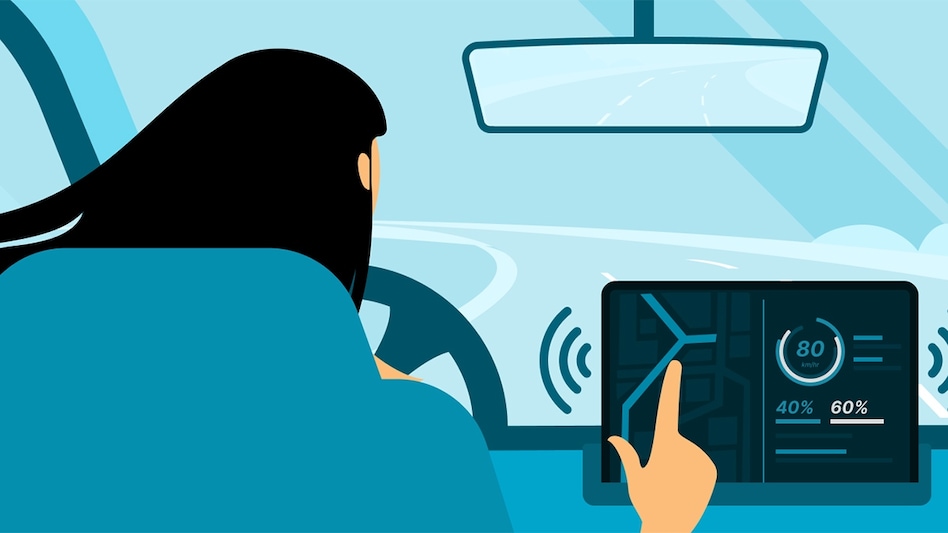
 The heart of automotive UX lies in evolving the interaction between humans and vehicles to be as seamless and satisfying as possible
The heart of automotive UX lies in evolving the interaction between humans and vehicles to be as seamless and satisfying as possible The heart of automotive UX lies in evolving the interaction between humans and vehicles to be as seamless and satisfying as possible
The heart of automotive UX lies in evolving the interaction between humans and vehicles to be as seamless and satisfying as possibleToday, the automotive industry isn’t talking just about horsepower and fuel efficiency; it’s also dedicated to creating unparalleled user experiences. We have moved away from focusing primarily on the mechanical prowess of the vehicles and have begun envisioning a holistic experience for drivers as users.
Think Design has been at the forefront of designing digital experiences for the booming automotive industry. Through user-centric design processes, we are implementing strategies that are not only future-facing but also utilize cutting-edge technology to create products that are already a step ahead.
What is Automotive UX?
Automotive user experience fundamentally refers to the overall experience a driver and passengers have with a vehicle's technology and interfaces. It encompasses everything that makes driving more intuitive, easy, and enjoyable.
The heart of automotive UX lies in evolving the interaction between humans and vehicles to be as seamless and satisfying as possible.
Evolution of UX in the Automotive Industry
The evolution of automotive UX started with the development of basic mechanical controls. Over time, we witnessed the entry of digital displays, touchscreens, etc., moving to the introduction of autonomous driving to the global automotive market. This evolution has seen light owing to the advancements in technology, user requirements, and the increasing need for safety and convenience.
Now, innovators across the industry have broadened their visions to enhance user experiences in the automotive sector. They’ve moved away from focusing on automobiles alone and begun tweaking the car buying, driving, and maintenance processes. Industry giants, like Tesla, have begun crafting improved services and post-purchase journeys for users worldwide.
With the continually evolving technology and material design techniques, the potential for richer and more intuitive user interfaces grows exponentially.

How Does Automotive UX Make a Difference?
Automotive UX has consistently evolved to create experiences that are different, improved, and a step closer to sustainable transportation. Some major results of evolved automotive UX includes:
a. Improving Car Design
UX design plays a crucial role in shaping the way vehicles are designed. It takes into consideration important factors like ergonomics, safety, and preferences of drivers and passengers alike. Since car design now involves much more than just the car exterior, this plays an essential role in improving the overall experience.
Our UX experts work closely with automotive engineers to improve the controls, design enjoyable navigation, and create user-friendly interiors.
b. Infotainment Systems and Interfaces
The evolution in modern vehicles brings the need to create better infotainment systems. With more to display, UX designers must create systems that are easy to understand and use while driving.
The goal is to allow the drivers remain focused on the road and provide access to an array of useful features.
c. Autonomous Vehicles
As we move towards autonomous vehicles, UX design becomes even more critical. Aspects such as intuitive interfaces, real-time as well as tactile feedback, and mechanisms to gain emergency controls, etc., are required to gain trust and comfort from users (that is, passengers) in self-driving vehicles.
Challenges Faced in the Industry
When crafting better experiences for drivers and passengers alike, the following are the common challenges any UX designer may face.
a. Accessible Design
Creating accessible automotive design is the crux of moving towards evolved experiences. Since people of all ages, ethnicities, backgrounds, and technological proficiency levels drive, it is essential to create design that caters to a larger audience.
b. Ensuring Safety
While introducing innovative features, the primary focus must always be on safety. Distraction-free driving remains a critical concern for all UX designers.
c. Enabling Off-Vehicle Experiences
To match the consumer expectations from similar experiences, UX designers are stepping up to create systems that can easily integrate with other commonly-used devices and electronics for easy access to automobiles.
d. Regulatory Compliant Designs
As mentioned, safety supersedes savvy when designing automotive experiences. The automotive industry functions on a complex web of regulatory and compliance standards that UX designers must adhere to, even when designing ground-breaking solutions.
In the automotive industry, UX design is a driving force towards innovation. By understanding the history, user and manufacturers’ challenges, and the requirements, UX design is the key to automotive evolution.
Stuti Mazumdar is Deputy Design Studio Head and Vidhi Tiwari is UX Writer at Think Design Collaborative.
(DISCLAIMER: Any views, thoughts, and opinions expressed by the author or authors are solely their own and do not reflect the views, opinions, policies, or position of Business Today)